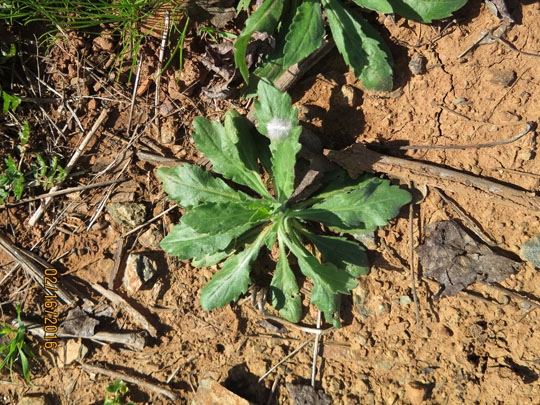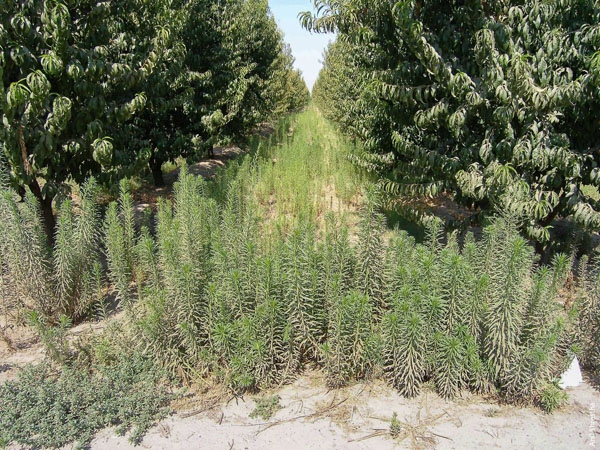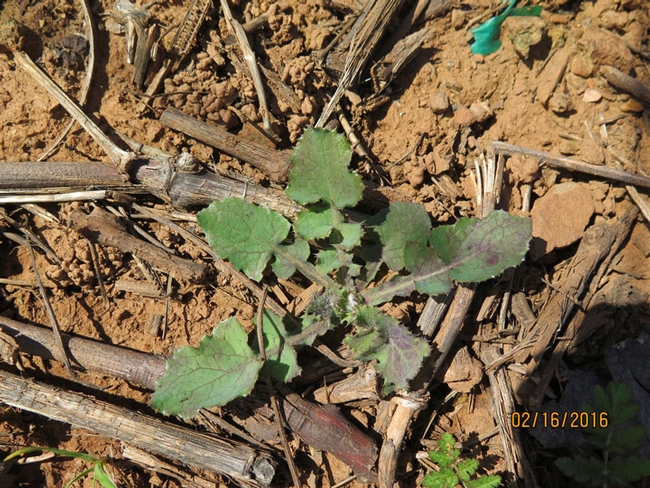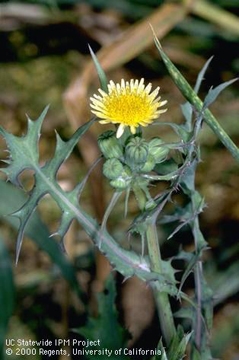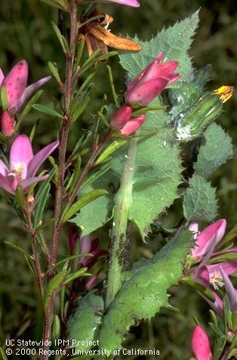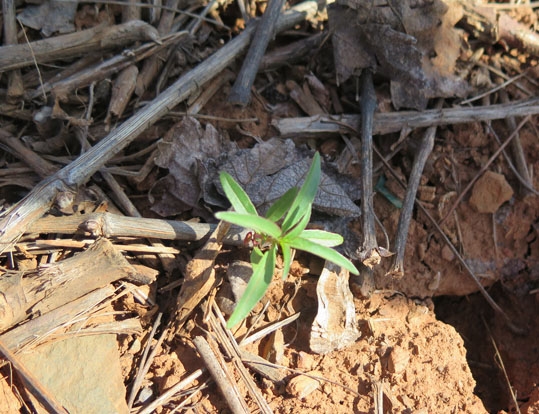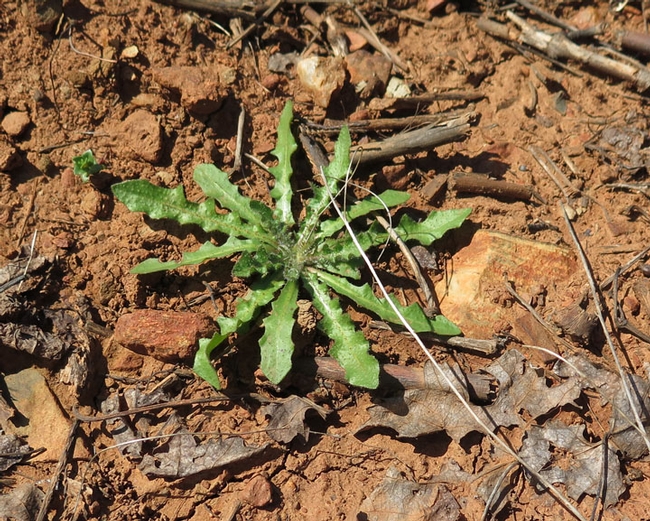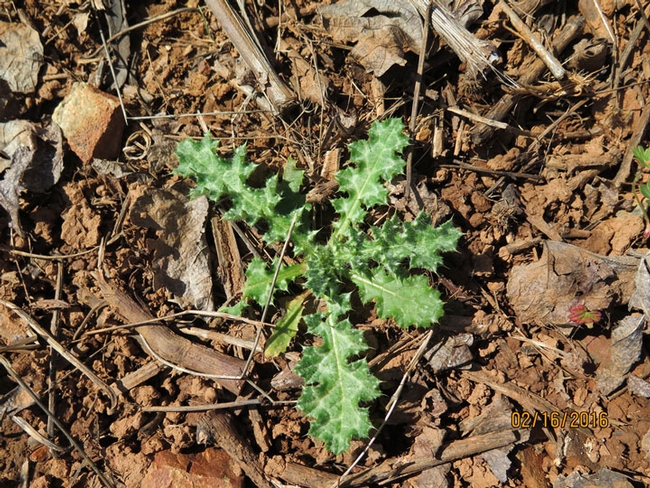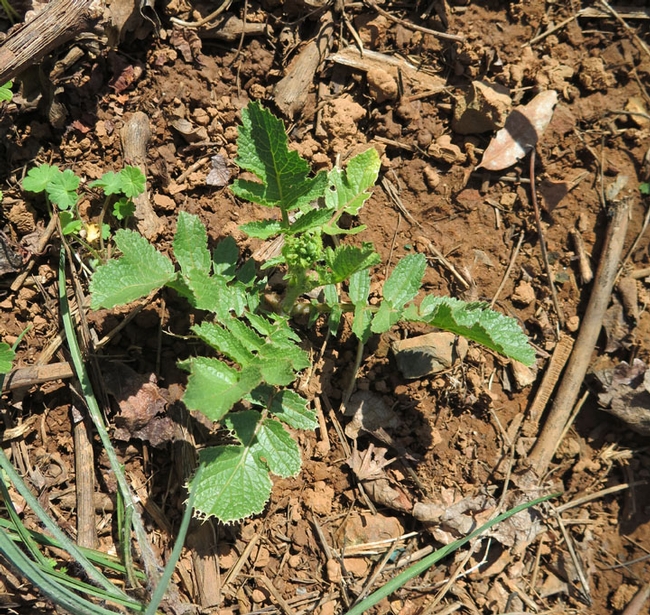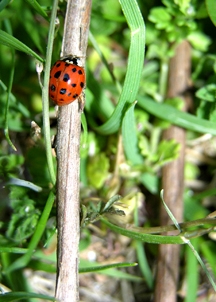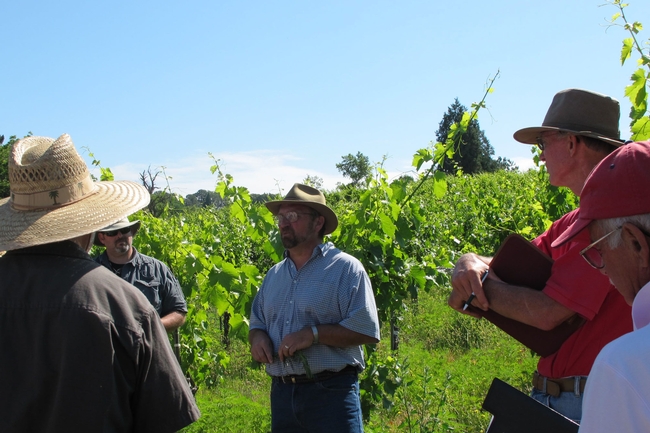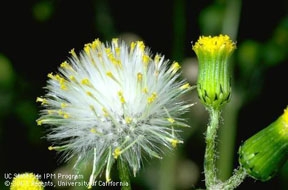Hello amateur botanists! (and aren't all growers botanical enthusiasts?) Here are the answers to last week's Fodder Weed ID Quiz, and some tips on where to find information on management for those plants you're not so enthused about.
Weed 1: Hairy Fleabane, often confused with Horseweed.
#1. Some of you might have confused this
Hairy Fleabane seedling with another
Conyza species,
Horseweed. The two look very similar as seedlings and can be a major problem in cropped land, growing up into canopies. Recently, reports of these two weeds in vineyards and orchards have increased, and glyphosate resistance has been documented for both
Hairy Fleabane and
Horseweed by UC researchers Anil
#2. OK this was a gimme to build up your confidence (and mine!). Wild radish (Raphanus sp.), or radish, is sometimes considered a beneficial plant-because it provides pollen for bees, butterflies and natural enemies, like this ladybird beetle I saw out just this week. You say "weed," I say "resource!"
#3. This familiar looking seedling is
annual sowthistle (Sonchus sp.). And, just as radish is a resource for "good bugs,"sowthistle can harbor "bad bugs" like aphids-particularly a problem for gardeners and veggie growers.
#5. Common groundsel (Senecio sp.), also called 'old man of the spring' (no idea why-although it is said to be tenacious) is a common winter annual that prefers cooler weather and dies out once summer heat arrives. It can grow in poor soils and, like many of the weeds described here, produces an abundance of seeds. This leads to another rule of good weed control: get them BEFORE they flower! The most damaging aspect of this weed is it's toxicity to livestock.
Weed 6: the "pricker" a.k.a Italian Thistle
For more weed ID and management information, consult the UC Weed Research Information Center.
